Burrata Cheese: The Creamy Italian Delight You Need in 2025
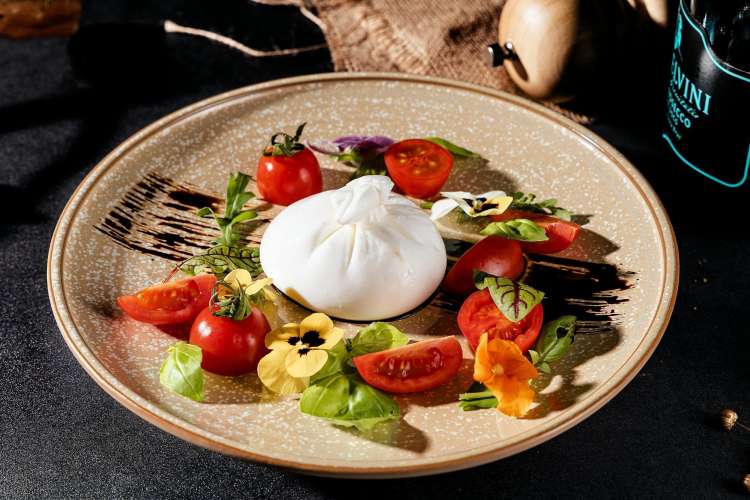
Burrata cheese is the Italian indulgence you’ll want on your table. This creamy, soft cheese has taken the culinary scene by storm, appearing on everything from fine dining menus to popular cooking shows. Its rise isn’t just a trend — it’s a game-changer in kitchens everywhere. With its rich, buttery flavor, burrata turns simple dishes into something extraordinary. Find out how to add it to your cooking repertoire or summer dinner ideas and master the art of using burrata in no time.
Jump to Section
- What Is Burrata Cheese?
- The History of Burrata Cheese and How It's Made
- Etymology of Burrata Cheese
- Uses for Burrata Cheese
- Pairings With Burrata Cheese
- Health Benefits of Burrata Cheese
- How to Make Burrata Cheese at Home
- Where to Buy Burrata Cheese
- Burrata Cheese FAQs
What Is Burrata Cheese?
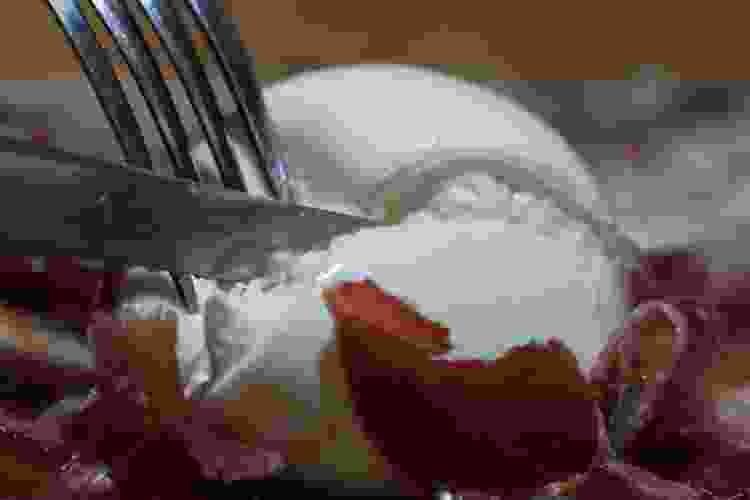
Burrata is a fresh Italian cheese made from cow’s milk. At first glance, it looks like a ball of mozzarella cheese, but slice it open, and you’ll discover its secret: a soft, creamy center filled with stracciatella (shreds of mozzarella soaked in cream). This creamy interior is what sets burrata apart from traditional mozzarella. While mozzarella is firm and stretchy, burrata features a delicate outer shell and a rich, spoonable middle that’s truly unique.
Burrata’s flavor is buttery, milky and slightly tangy with a clean, fresh finish. It’s mild but indulgent — think of it as mozzarella, but with more richness and a smoother texture. As a fresh, unripened cheese, burrata is best enjoyed shortly after it’s made, ensuring you experience its full, creamy goodness.
The History of Burrata Cheese and How It's Made

Burrata cheese was born in the 1920s in Italy’s Apulia region, under the shade of Castel del Monte. In the farm-rich territory of Murgia, cheesemaker Lorenzo Bianchino Chieppa invented burrata to reduce waste, using leftover mozzarella curds and thick cream skimmed from fresh milk. With no refrigeration and long journeys to market, Chieppa crafted a clever solution: he tucked the cream-soaked strips of cheese, called stracciatella, into a hand-shaped mozzarella pouch and sealed it in leaves to keep it fresh. The result was a soft, white bundle with a pinched top, bursting with a creamy, milky filling.
The outer shell of burrata is made from freshly stretched mozzarella, formed while still warm and pliable. Traditionally, cheesemakers would inflate the mozzarella by blowing into it like a balloon. Once shaped, the pouch is filled with a rich mixture of cream and shredded mozzarella, then sealed. Though modern dairies now use machines and plastic wrappings, the process remains true to its roots, with a focus on craftsmanship.
Today, burrata is a global delicacy, but its heart still beats in Apulia. With the protected geographic label Burrata di Andria IGP, local dairies continue to make burrata using traditional methods, even if the milk comes from other regions.
Etymology of Burrata Cheese

The word "burrata" comes from the Italian word burro, meaning “butter.” This name reflects the cheese's creamy, luxurious interior, which has a rich, buttery texture that melts in your mouth. Though there’s no actual butter in the cheese, its flavor and consistency are what inspired the name.
Uses for Burrata Cheese
Burrata isn’t just a cheese – it’s a game changer for any meal. Add it to pasta, salads, or sandwiches and watch it bring a rich, creamy touch to your dishes. Looking for new lunch ideas for work or something special to serve guests? Burrata fits perfectly into both.
Burrata Cheese Recipe: Burrata Caprese Salad
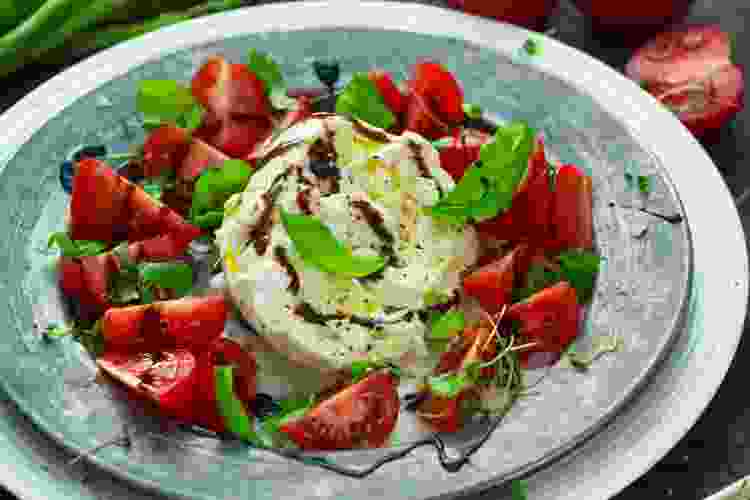
For a fresh twist on a classic Caprese, replace mozzarella with burrata. Layer heirloom tomatoes, top with a ball of burrata, and garnish with fresh basil. Drizzle with olive oil and balsamic glaze, then season with salt and cracked black pepper. Serve with crusty bread for a light and satisfying dish.
Burrata Cheese Pizza
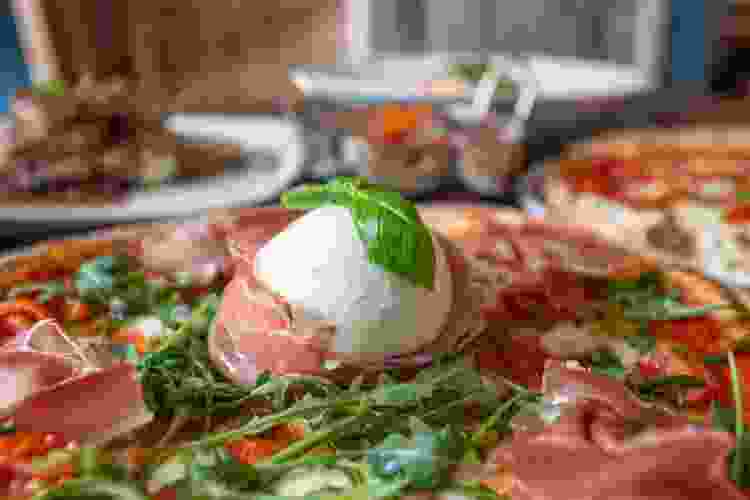
Burrata makes an irresistible topping for pizza. Unlike mozzarella, which melts during baking, burrata is best added just after the pizza comes out of the oven so the creamy center stays intact.
After baking your pizza, tear open a ball of burrata and place it on top. The heat from the pizza will warm the cheese, creating a creamy finish. Finish with fresh basil and a drizzle of olive oil for an extra touch of flavor.
Burrata Cheese Recipe Pasta: Creamy Tomato Burrata Pasta

For a simple yet indulgent pasta dish, sauté garlic and halved cherry tomatoes (or your favorite vegetable) in olive oil until soft. Toss with cooked penne or rigatoni and top with a ball of burrata. Cut into the cheese just before serving so the creamy center coats the noodles. Garnish with fresh basil and chili flakes.
Sandwiches and Toasts
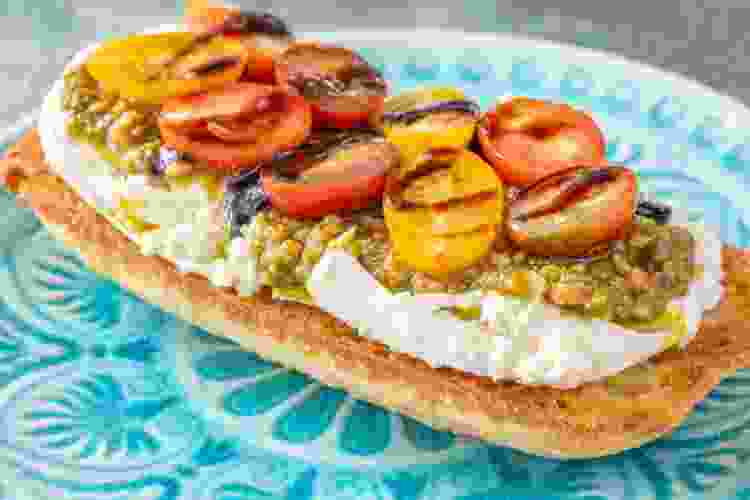
Add burrata to sandwiches for a luxurious twist. Layer it with roasted vegetables or prosciutto on toasted ciabatta. For a quick appetizer, top crostini with burrata, honey and crushed pistachios for a sweet-savory bite.
Cheese Boards and Appetizers

Burrata shines on any cheese board, making it a must-have for your next charcuterie board ideas. Pair it with figs, olives, prosciutto, roasted peppers or grilled bread. Because of its delicate flavor, it balances well with both sweet and savory elements. Discover more cheese board ideas and what types of cheese to use for your next recipe.
Pairings for Burrata Cheese
Burrata pairs beautifully with wines that balance its rich, creamy texture. A light, citrusy Pinot Grigio is a great match, with fresh notes of green apple and pear that cut through the cheese’s milky richness. If you're after something with a bit more depth, Sauvignon Blanc offers grassy, citrusy notes that complement burrata’s creaminess. For a more traditional pairing, Greco di Tufo brings crisp, dry flavors of green apple and stone fruit that are perfect with this Italian delicacy.
For a bit of sparkle, Prosecco is light and fizzy, making it the ideal wine to cleanse the palate between bites of burrata, especially in salads or on a cheese board. If you prefer a red, Beaujolais works well with burrata, offering fruity, floral flavors without overwhelming the cheese. Lastly, a dry rosé, particularly from Provence, brings a balance of acidity and red fruit that enhances dishes like burrata pizza or tomato burrata salads.
Health Benefits of Burrata Cheese
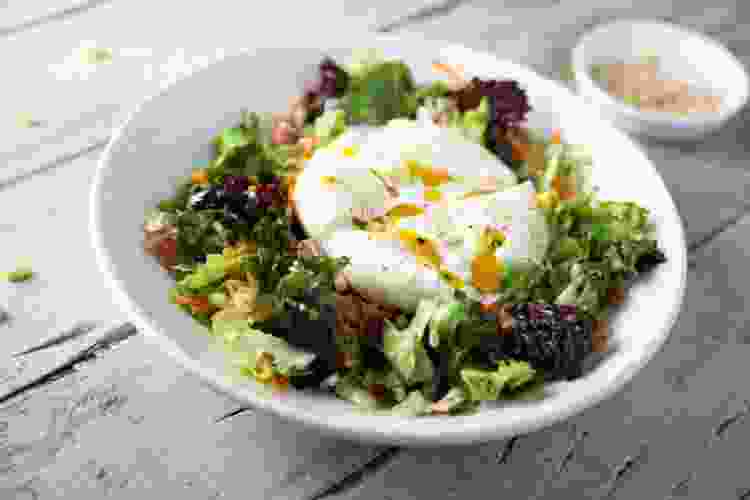
Burrata cheese isn't just a culinary indulgence; it's a surprisingly nutritious addition to your diet when enjoyed in moderation. A 1-ounce (28g) serving of burrata contains approximately 70–80 calories, 6 grams of fat (4 grams saturated) and 3–6 grams of protein, depending on the brand.
Since it's rich in calcium, burrata also supports bone health and may help prevent conditions like osteoporosis. It's also a good source of protein, essential for muscle maintenance and overall wellness. Additionally, the conjugated linoleic acid (CLA) found in dairy fats like those in burrata may have anti-inflammatory effects and could contribute to heart health. For those with lactose intolerance, burrata may be a suitable option, as it tends to have lower lactose levels compared to other cheeses.
Keep in mind, though, that while burrata offers these health benefits, it's important to consume it in moderation due to its calorie and saturated fat content.
How to Make Burrata Cheese at Home
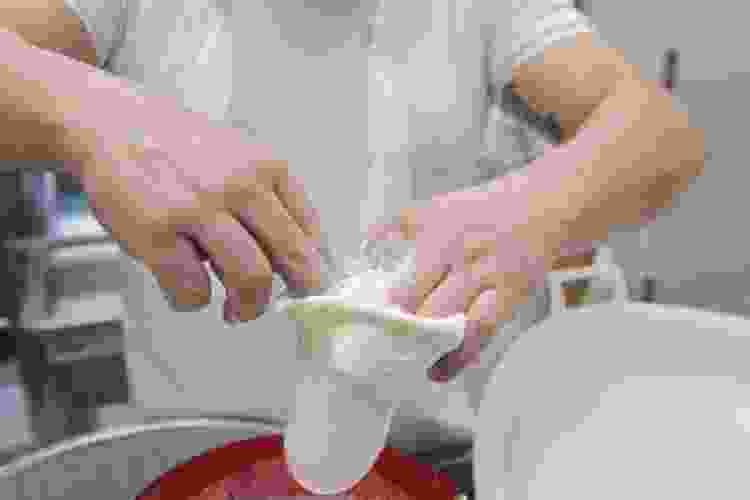
Making burrata at home is easier than it sounds, and the result is worth it. Burrata is essentially fresh mozzarella filled with a creamy mixture of shredded curds and heavy cream, called stracciatella. With just a few ingredients and some patience, you can make your own.
Start by heating cheese curds with boiling water to melt them into a smooth, stretchy mass. Stretch and shred the curds, then mix with heavy cream and salt to create your stracciatella. Next, flatten fresh mozzarella into a disc, and spoon the creamy mixture inside. Fold the edges over to seal it, then chill the burrata in cold water to set.
Enjoy it fresh, topped with flaky salt and olive oil, or pair it with crusty bread, tomatoes, or fresh summer fruit.
Where to Buy Burrata Cheese
To find burrata, your best bet is to visit a local dairy, cheesemonger or Italian shop. If these aren't available, check places like Costco and Whole Foods, which both offer high-quality options. Prices can range from $6 to $50, with most stores selling it for about $10–$15.
Burrata Cheese FAQs
What Is the Difference Between Burrata and Mozzarella?

Burrata is essentially mozzarella shaped into a pouch and filled with creamy, shredded curds (stracciatella), making it richer and creamier than regular mozzarella.
How Should Burrata Be Eaten?
There’s no wrong way to eat burrata. Whether on its own or in a dish, it’s guaranteed to be delicious.
What Cheese Is Closest to Burrata?
Mozzarella is the closest cheese to burrata, so if you’re looking for a substitute, mozzarella will do just fine.
Does Trader Joe’s Sell Burrata?
Yes, but it’s not always in stock. Check with your local store before making a trip.
Burrata is a true delight in the kitchen. One bite, and you’ll understand why this creamy cheese is loved worldwide.
For even more fun foodie ideas, check out other experiences happening on Classpop!

